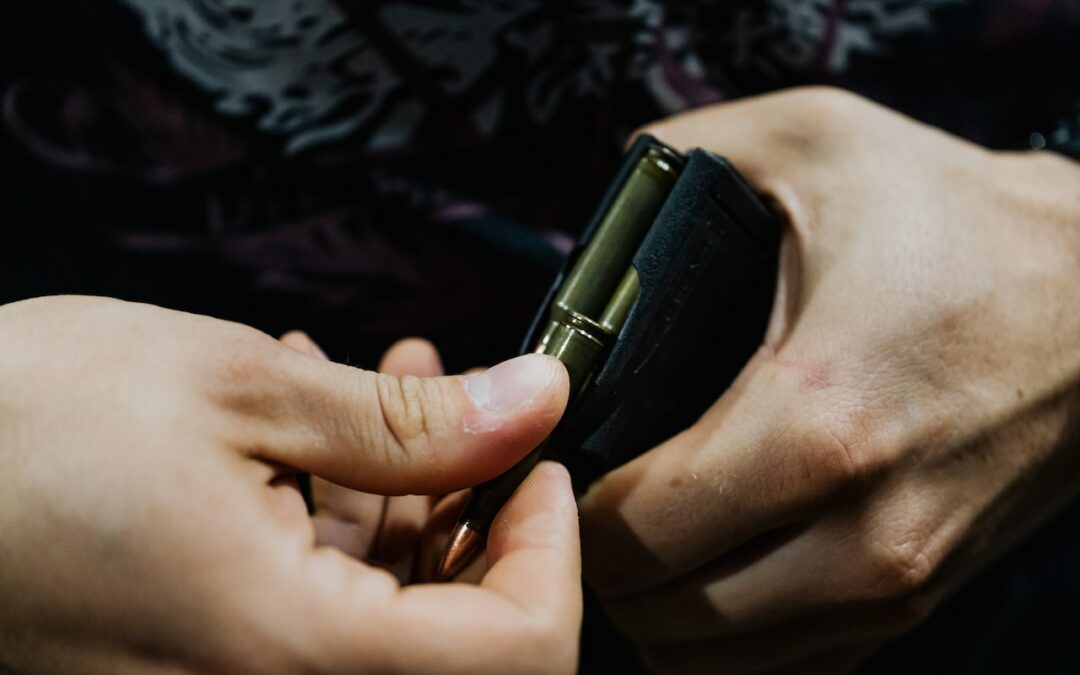If you’re a gun enthusiast, you’ve likely considered reloading your own ammunition at some point. Reloading bullets can be a cost-effective and rewarding hobby, giving you more control over the quality and performance of your ammo.
However, it can also be a daunting task for beginners, with a wide array of reloading supplies and techniques to master. In this article, we’ll guide you through the basics of reloading ammo, including the essential equipment and steps involved in the process.
What Is Reloading?
Reloading, also known as handloading, is the process of assembling ammunition by combining individual components, such as the bullet, case, primer, and propellant. This allows shooters to create custom rounds tailored to their specific needs, preferences, and firearm specifications.
Additionally, reloading can provide significant cost savings, as reusing spent brass casings and purchasing components in bulk can be more economical than buying factory-loaded ammunition.
Why Reload?
There are several reasons why shooters choose to reload their own ammunition:
- Cost Savings: As mentioned earlier, reloading can be more cost-effective than purchasing factory-loaded ammo, particularly for those who shoot frequently or in large volumes.
- Customization: Reloading allows shooters to create custom rounds optimized for their specific firearm, preferences, and shooting conditions. This can lead to improved accuracy, performance, and overall enjoyment of the shooting experience.
- Availability: In times of high demand or limited supply, reloading can ensure a steady supply of ammunition for practice, competition, or self-defense purposes.
- Satisfaction: Many shooters find reloading a rewarding and engaging hobby, providing a sense of accomplishment and self-sufficiency.
- Environmental Friendliness: Reloading reduces waste by reusing spent brass casings and minimizing packaging materials.
Essential Reloading Supplies for Beginners
Reloading Press
The reloading press is the heart of any reloading setup and is used to perform the majority of the essential tasks involved in reloading ammunition, such as resizing cases, seating bullets, and crimping. Numerous types of presses are available, including single-stage, turret, and progressive presses.
For beginners, a single-stage press is generally recommended, as they are simple, affordable, and provide a solid foundation for learning the basics of reloading.
Dies
Dies are used in conjunction with the reloading press to perform specific tasks, such as resizing cases, expanding case mouths, and seating and crimping bullets. Dies are caliber-specific, so purchasing a set of dies that match the caliber of the ammunition you plan to reload is essential.
Brass Tumbler
A brass tumbler is used to clean spent brass casings before reloading. Clean casings are crucial for ensuring proper chambering, function, and accuracy.
Numerous brass tumblers exist, such as vibratory and rotary ones, which utilize different materials like corn cob or stainless steel pins for the purpose of cleaning and polishing the brass.
Case Lube
Case lube is applied to brass casings before resizing to prevent them from becoming stuck in the resizing die. Several types of case lubes are available, including aerosol sprays, liquid lubes, and wax-based lubes.
It is essential to apply an even coat of lube to ensure smooth resizing and prevent damage to the brass.
Powder Scale and Dispenser
A powder scale and dispenser are used to measure and deliver precise charges of propellant for each round of ammunition. Accurate and consistent powder charges are crucial for ensuring reliable performance and maintaining safe pressures. Various types of scales and dispensers are out on the market, such as balance beam scales, digital scales, and combination units that incorporate both a scale and dispenser.
Calipers and Micrometers
Calipers and micrometers are essential tools for measuring the dimensions of various ammunition components, such as case length, bullet diameter, overall cartridge length, etc. These measurements ensure that all rounds will chamber properly in the firearm and maintain safe pressures during firing.
Digital calipers offer quick readings with high accuracy, while dial or vernier calipers provide more traditional measurement methods.
Bullet Puller
A bullet puller is a handy tool used to disassemble loaded cartridges safely by removing bullets from their casings without damaging either component. This may be necessary when handloading mistakes occur (e.g., improper powder charge) or if you want to recycle components from factory-loaded ammunition that has been deemed unsuitable for shooting due to age or damage.
There are two primary types of bullet pullers: kinetic hammer-style pullers, which use inertia forces generated by striking a hard surface, and collet-type press-mounted units, providing precise mechanical leverage.
Conclusion
Reloading ammunition is a cost-effective and rewarding hobby for gun enthusiasts, allowing customization and ensuring a steady supply. With the right equipment and practice, beginners can master the process, promoting environmental friendliness and self-sufficiency.
Acquire premium reloading supplies in Myrtle Beach through RedEye Reloading. Gather all the necessary items for your upcoming shooting session, including brass cases and reloading presses. Place an order or visit our shop today!
